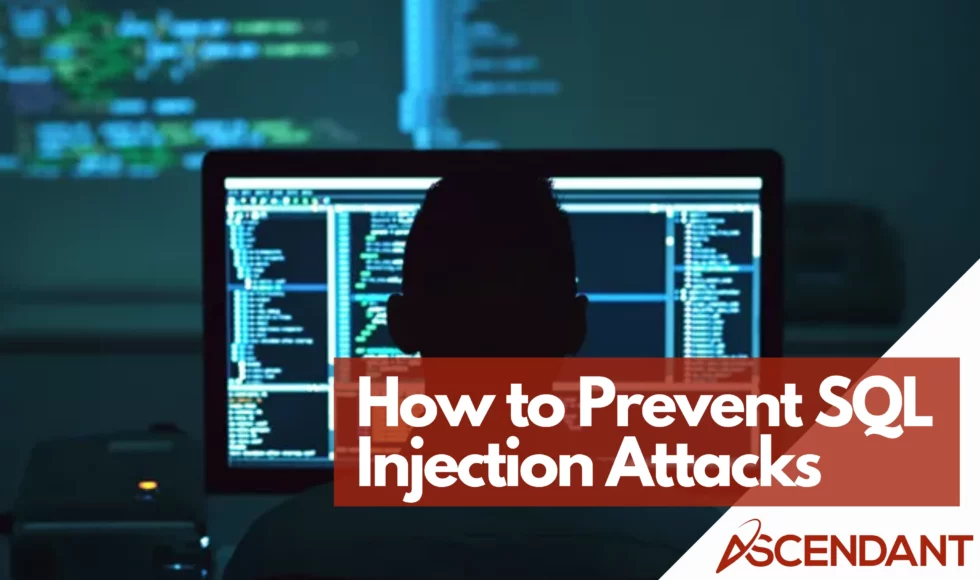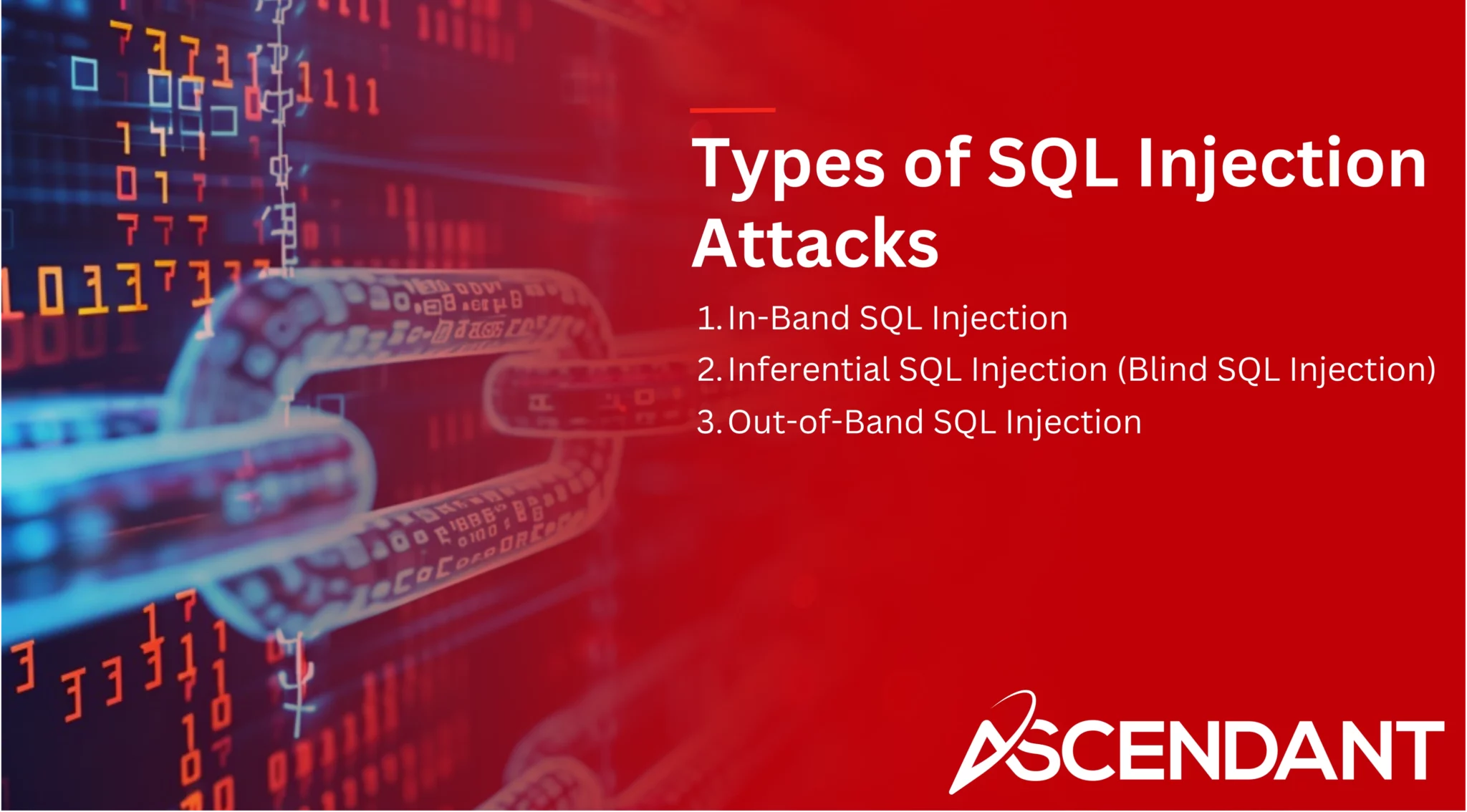SQL injection is a major security risk that allows attackers to control your database. This guide explains how SQL injection works, its different types, and how to prevent these attacks to keep your applications secure.
Key Takeaways
- SQL injection attacks exploit vulnerabilities in SQL queries, allowing unauthorized access and manipulation of databases, with a significant increase in occurrences noted in recent years.
- Preventative measures like input validation, parameterized queries, and stored procedures are essential to protect against SQL injection attacks, whereas automated tools enhance detection capabilities.
- Effective incident response to SQL injection attacks requires immediate actions to contain the incident and long-term strategies for detection and recovery to mitigate future risks.
Understanding SQL Injection Attacks
Managing web applications that engage with SQL databases necessitates vigilance against sql injection attacks, where attackers manipulate vulnerabilities within SQL queries to carry out unsanctioned sql commands. This can result in unlawful access and alterations to the database content. The gravity of this issue is underscored by the discovery of 274,000 incidents involving based sql injection vulnerabilities across various applications tested during 2021, revealing how pervasive this type of security threat has become.
To prevent these incursions effectively, one must first grasp what SQL injection entails and understand its operational dynamics. Henceforth, an elucidation on this subject matter is provided herewith which encompasses a comprehensive definition as well as a breakdown of how such exploitations are executed by nefarious entities targeting web-based interfaces.
What is SQL Injection?
SQL injection (SQLi) represents a significant vulnerability in web security that occurs when attackers manipulate an application’s SQL queries by injecting malicious sql code. This intrusion allows them to circumvent authentication protocols, extract, alter or delete records from the database and gain access to confidential data. The susceptibility of SQL databases arises due to their construction of sql statements which can be illicitly influenced through a crafted sql command.
Attackers employ various strategies during an SQL injection attack such as utilizing UNION operators for merging results across disparate tables or corrupting user input within WHERE clauses. They introduce harmful payloads that have the potential to modify existing SQL statements. Through these methods, assailants are capable of performing numerous nefarious activities ranging from the theft of sensitive information all the way up to full-scale compromise and control over the targeted database system.
How SQL Injection Works
An SQL injection attack transpires when an attacker injects SQL commands into input fields, which then modifies how the existing SQL queries are executed. For instance, in a successful sql injection attack scenario, an attacker might employ the UNION operator to attach a malicious sql query onto an authentic one, combining results and procuring unauthorized access to sensitive data such as user credentials.
By manipulating conditions within the sql statements through inserted values that equate always true—like using 5=5—an intruder can bypass security checks and gain unapproved entry into database systems. Typically, prone to these attacks are areas where user input is processed—for example forms—where attackers seize opportunities to infuse their malicious code including both malicious sql code and other harmful instructions.
The technique known as blind SQL injection or inferential SQL injection involves scenarios where attackers do not get direct feedback from their activities on the database. Instead, they deduced its structure based on responses received following execution of their crafted queries. Even though this method requires more time for exploitation compared with others, it retains potential effectiveness in breaching databases by employing subtly crafted sequences of manipulative actions targeting vulnerabilities linked directly with said databases’ response mechanisms.
Types of SQL Injection Attacks
SQL injection attacks are typically divided into three primary categories: in-band, inferential (also known as blind), and out-of-band. It’s critical to recognize the distinct features and execution techniques of each category to effectively combat these security threats.
In the case of in-band SQL injection, attackers leverage the same communication path for both launching their assault and gathering its outcomes. Conversely, an inferential or blind SQL injection enables attackers to deduce information from how the application responds without directly accessing data.
Lastly, out-of-band SQL injections utilize a separate channel for submitting queries and collecting results. This approach is especially beneficial when alternative strategies prove impractical.
In-Band SQL Injection
Using in-band SQL injection, attackers employ the same channel to launch their assault and gather data, which provides them instant results. As an example, consider a manipulated SQL query crafted to sidestep login security: SELECT id FROM users where username=’user’ AND password=’pass’ OR 5=5. By altering the SQL statement this way, perpetrators are able to extract information directly from the database.
These attackers may exploit the UNION operator within sql queries as a means to concatenate outcomes from separate sql statements. This method enables access to diverse sets of records across various tables on an sql server and proves highly effective when aiming to amass substantial quantities of data.
Inferential SQL Injection (Blind SQL Injection)
Blind SQL injection, also known as inferential SQL injection, is a technique where the attacker does not receive direct data from their intrusion attempt. Instead, they send payloads of data to the server and deduce its structure by interpreting the responses received. This approach often demands greater time and effort to deduce vital information compared to in-band SQL injections due to its indirect nature.
Nevertheless, these blind SQL injections maintain their potency when it comes to breaching databases. Attackers meticulously scrutinize query feedback, allowing them slowly but surely reconstruct the database layout and ultimately reach confidential data contained within it.
Out-of-Band SQL Injection
Out-of-band SQL injection is characterized by using separate channels for the attack and data retrieval. This type of attack is typically used when the server is too slow or unstable to perform other types of SQL injections. Out-of-band SQL injections can be more challenging to execute, but offer a viable alternative when other methods are not feasible.
By using different communication channels, attackers can bypass certain security measures and still retrieve the desired data from the database.
Real-World Examples of SQL Injection
SQL injection attacks pose a considerable threat as they can lead to significant breaches, putting large entities at risk and revealing confidential information. One notable example occurred in 2014 when security experts used SQL injection to acquire administrative privileges on Tesla’s website, leading to the exposure of user data. In another instance, attackers penetrated systems across 53 universities using this method, resulting in the theft and publication of over 36 thousand individual records.
The severity of these incidents underscores the critical importance of implementing strong defenses against SQL injection attacks. Subsequent sections will detail particular instances where SQL injections were employed, shedding light on both their destructive potential and the techniques utilized by perpetrators.
Authentication Bypass
An attacker can manipulate SQL queries through an SQL injection to bypass security measures by altering the query such that it always yields a true result, thus enabling unauthorized users to gain access. For instance, someone could change a SQL query in order to obtain administrative privileges without the necessary authentication. This technique exploits flaws within the application’s sql queries and permits attackers to circumvent authentication protocols and acquire access to sensitive data.
Data Exfiltration
Unauthorized access to sensitive data through manipulating SQL queries in a database is known as data exfiltration. It occurs when attackers use SQL injection to retrieve protected information from tables, breaching the security and undermining the integrity of the database by extracting sensitive data they are not authorized to access.
Detecting SQL Injection Vulnerabilities
It is imperative to uncover SQL injection vulnerabilities in order to thwart attacks and safeguard sensitive data. These security flaws can empower attackers with the ability to manipulate database operations and retrieve confidential information. The techniques of SQL injections are differentiated by their approach towards backend data access as well as the extent of harm they could inflict.
To pinpoint these susceptibilities, a blend of hands-on testing tactics along with automated solutions proves indispensable. Manual examination requires scrutinizing web application responses and inspecting logs for potential gaps in security. In contrast, automated instruments like Burp Suite and SQLMap expedite this scrutiny process, enhancing the discovery of weaknesses within systems more effectively.
Manual Testing Techniques
In an effort to detect vulnerabilities, one customary practice is to enter single quotes or semicolons into input fields during manual testing for SQL injection attacks. The occurrence of error messages when these atypical inputs are used can disclose possible security weaknesses by showing how the application deals with inputs that were not anticipated. Observing web applications’ reactions aids in identifying which specific input fields might be prone to SQL injection.
Scrutinizing logs from both web applications and their associated databases can shed light on where potential weak spots exist and trace back the source of an SQL injection attack. This investigative technique offers critical insights regarding the application’s frailties and assists in devising robust defensive strategies against such threats.
Automated Tools for Detection
Essential for the swift detection of SQL injection vulnerabilities are automated tools such as Burp Scanner. The Burp Suite comes equipped with functionalities that facilitate the automatic probing for SQL injections over a range of input fields, ensuring an all-encompassing review of the application’s defenses. Similarly, SQLMap serves as a formidable instrument crafted to streamline the discovery process of SQL injection flaws across assorted database systems.
Capable of executing both manual and systematic examinations, these instruments reveal security gaps which could go unnoticed by sole reliance on human testing procedures. Utilizing automated solutions empowers organizations to boost their proficiency in recognizing and resolving potential weaknesses related to SQL injection threats effectively.
Preventing SQL Injection Attacks
It is crucial to safeguard the security and integrity of SQL databases by averting SQL injection attacks. To identify potential SQL injection vulnerabilities, it’s necessary to assess if user input has the ability to alter SQL queries in the absence of adequate validation measures. Diligently adhering to recommended practices and conducting regular vulnerability assessments can greatly diminish the threat posed by SQL injections.
To effectively thwart such attacks, techniques like validating user input meticulously, employing parameterized queries, executing stored procedures, and appropriately escaping inputs from users are vital. These strategies aid in crafting secure SQL queries that help minimize exposure to SQl injection risks.
Input Validation
To ensure that user inputs meet the expected formats and values, input validation must be rigorously applied. Employing allow-list input validation is an effective method where only a predefined list of acceptable values is permitted, as recommended by OWASP, who favor stringent input validation methods rather than escaping user inputs for heightened security.
By implementing strong input validation measures, one can thwart attackers’ attempts to insert malicious SQL code via user inputs. This acts as the primary defense mechanism in efforts to prevent SQL injection attacks.
Use of Parameterized Queries
Utilizing parameterized queries is crucial as it interprets user inputs solely as data, thereby removing the possibility of these inputs being executed as code. By transforming user input into a form that is not string-based prior to their inclusion in SQL queries, one can thwart attempts at SQL injection attacks. When stored procedures incorporate parameterized inputs, they reinforce security against such vulnerabilities.
The adoption of parameterized queries plays a vital role in crafting secure SQL queries by sidestepping the hazards associated with concatenating strings within query construction. This method stands out as an indispensable defense mechanism for securing SQL databases from hostile intrusions through injection techniques.
Implementing Stored Procedures
Stored procedures encapsulate SQL statements within the database, effectively safeguarding against direct user input interactions with the SQL code and mitigating injection threats. By defining and storing this SQL code in stored procedures, query security is bolstered and database integrity is preserved.
Escaping User Inputs
Escaping user inputs is a less secure practice and should only be used if no other methods are applicable. Tools like ESAPI provide codecs for popular databases to help implement escaping in legacy database code.
However, escaping user input is considered the least secure option because it is effective only if all control characters are escaped, and attackers can creatively inject them.
Incident Response to SQL Injection Attacks
In the event of a SQL injection attack, it’s essential to respond quickly and efficiently in order to limit damage and protect the database. Such attacks have resulted in severe data breaches for large organizations by allowing unauthorized access and leading to considerable thefts. Notable examples include an attack on 7-Eleven that resulted in the theft of 130 million credit card numbers.
To effectively counteract these breaches, organizations must enact both short-term measures aimed at containing immediate threats as well as long-term prevention plans. Adopting a methodical response strategy empowers entities to manage security incidents with alacrity, minimizing harm while strengthening their defenses against potential future SQL injection attacks.
Immediate Actions
Prior to any actions, it is imperative to swiftly sever the connection of the system subjected to a SQL injection attack from its network. This stops additional harm. The initial measure should be segregation of the systems implicated.
Subsequent steps involve:
- Promptly detaching the compromised system from its network in order to halt additional damage.
- Ensuring that affected systems are isolated and quarantined.
- Meticulously recording details pertaining to how the attack was carried out (the ‘attack vector’).
- Diligently evaluating just how much data or functionality has been impacted by this breach.
Forging collaboration amongst all involved parties during an investigation will aid in both grasping the entire scope of repercussions caused by this incident and also devising an effective plan for responding accordingly.
Long-Term Mitigation Strategies
Strategies for long-term mitigation encompass a methodical process that emphasizes identifying, confining, eliminating, and recuperating from threats. Continual refinement through testing and updating the incident response strategies bolsters organizational resilience to SQL injection attacks.
The adoption of supplementary security protocols coupled with maintaining current updates on all software components with the most recent security fixes can markedly diminish the likelihood of subsequent incidents involving SQL injection.
 Summary
Summary
In summary, SQL injection attacks represent a substantial risk to the security of web applications, with the potential to inflict serious harm by breaching SQL databases. It is crucial for organizations to comprehend how SQL injections operate and identify vulnerabilities while putting strong prevention tactics into practice in order to protect sensitive data effectively. Adhering strictly to best practices like enforcing input validation, employing parameterized queries, and conducting regular security patches are pivotal steps that organizations should undertake to defend their databases against these types of cyber threats.
The cornerstone for averting SQL injection attacks rests on unwavering attention and preventive defense strategies. Organizations can reduce dangers by remaining knowledgeable about current threats and taking appropriate precautions, thus preserving both the integrity and safety of their SQL database systems.
Frequently Asked Questions
What is SQL injection?
SQL injection is a serious web security vulnerability that permits attackers to compromise database queries through the injection of harmful SQL code, thereby potentially exposing sensitive data.
How can I detect SQL injection vulnerabilities?
For the efficient identification of SQL injection vulnerabilities, it is advisable to employ a combination of manual testing methods and automated instruments like Burp Suite and SQLMap.
Incorporating this dual strategy improves your proficiency in quickly pinpointing potential security breaches.
What are parameterized queries?
Parameterized queries are essential for enhancing security by treating user inputs strictly as data, which helps prevent SQL injection attacks. This approach ensures accurate and safe handling of user-supplied information during database operations.
How does input validation help prevent SQL injection?
Ensuring that user inputs conform to specified formats and values through input validation is crucial for mitigating the risk of SQL injection, thereby fortifying your application against this type of vulnerability.
By applying strong techniques for validating inputs, you can substantially bolster the security measures within your application.
What should I do if I detect a SQL injection attack?
If you detect a SQL injection attack, immediately isolate the affected systems and document the attack vector.
It is also crucial to coordinate an investigation with stakeholders to assess the extent of the compromise.


